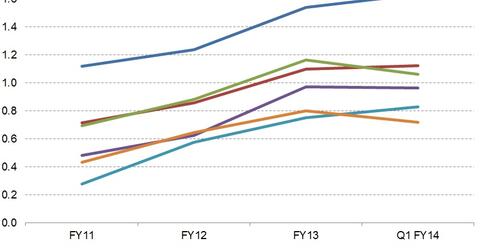Why the price-to-book value ratio’s the most used valuation
The price-book value ratio is the ratio of the market value of equity to the book value of equity. Price stands for the current market price of a stock. Book value is the total assets minus liabilities, or net worth, which is the accounting measure of shareholders’ equity in the balance sheet.
Oct. 29 2019, Updated 8:44 p.m. ET

What makes price-book value ratio such an important ratio?
The price-book value ratio is the ratio of the market value of equity to the book value of equity. Price stands for the current market price of a stock. Book value is the total assets minus liabilities, or net worth, which is the accounting measure of shareholders’ equity in the balance sheet. Price is a proxy for how the market values the company, whereas book value indicates the assets held by a company.
Analysts, investors, and fund managers who track the banking and financial industry often use the price-book value ratio for company valuations and as a way to find out if a stock is undervalued, overvalued, or rightly valued. It’s perhaps the single most used ratio while valuing financials. This ratio is used for full service banks like JP Morgan (JPM), traditional banks like Wells Fargo (WFC), investment banks like Goldman Sachs (GS) and Morgan Stanley (MS) or any other financials included in an ETF like Financial Sel Sect SPDR FD (XLF). What leads to this ratio being so widely used is that it’s intuitive, simple, and has a strong historical basis—back testing the price-book value ratio of prices has good correlation. But it brings its own sets of benefits and pitfalls that an investor should be aware of when using this ratio. So knowing what this ratio is and how it can be used to make sense of investing in banks will give an edge to investors.
